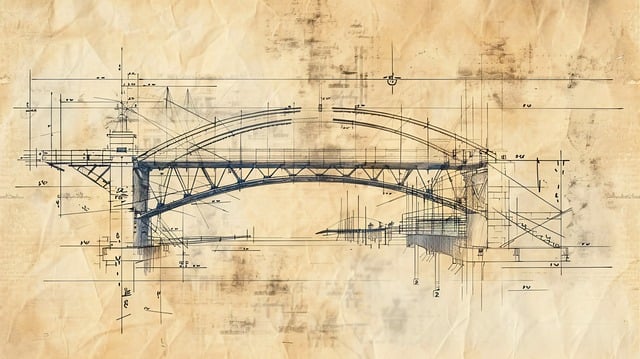Clarifying UK Tech Guidelines: The Power of Professional Translation
Translation services for UK Technical Guidelines and Standards are essential for ensuring global comprehension and adherence to these critical documents. By overcoming language barriers and nuances, professional translators enable diverse audiences t…….

Translation services for UK Technical Guidelines and Standards are essential for ensuring global comprehension and adherence to these critical documents. By overcoming language barriers and nuances, professional translators enable diverse audiences to access and understand complex technical concepts accurately. This universality promotes better industry practices, international collaboration, and safety by reducing misinterpretations, fostering a seamless exchange of knowledge worldwide while preserving the original clarity and conciseness of UK guidelines.
Are your UK technical guidelines leaving room for confusion? Effective communication is paramount, especially in technical documentation. With complex regulations and a diverse workforce, ensuring clarity and conciseness in UK technical guidelines is essential. This article explores the challenges of interpreting these guidelines, highlighting the critical role of professional translation services in fostering consistency and accuracy. We’ll also uncover best practices to simplify technical standards, enhancing understanding across industries relying on UK-compliant procedures. Discover how to leverage translation services for UK Technical Guidelines and Standards.
- Understanding the Importance of Clarity in Technical Documentation
- Challenges in Interpreting UK Technical Guidelines
- The Role of Professional Translation Services
- Ensuring Consistency and Accuracy Through Translation
- Best Practices for Creating Clear and Concise Technical Standards
Understanding the Importance of Clarity in Technical Documentation

In the realm of technical documentation, clarity is paramount. When it comes to UK technical guidelines, ensuring conciseness and ease of understanding can significantly impact how effectively these documents are adopted and implemented. For instance, in a fast-paced industry where knowledge transfer is vital, clear guidelines streamline processes, reduce errors, and foster productivity. This becomes even more crucial when considering the diverse audience these guidelines may serve—from seasoned professionals to newcomers.
Translation services for UK Technical Guidelines and Standards play a pivotal role in making this clarity universal. Effective translation ensures that technical documents are not just words on paper but accessible knowledge resources for all stakeholders, regardless of their native language. This accessibility is essential for international businesses, research collaborations, and any scenario where diverse linguistic backgrounds converge, promoting better understanding and adherence to standards.
Challenges in Interpreting UK Technical Guidelines

Interpretation challenges often arise when navigating the UK’s technical guidelines, especially for those not native to the language or familiar with British English nuances. The complexity lies in the subtle differences in terminology and phrasing across languages, which can lead to misunderstandings. What seems clear in one language might translate awkwardly into another, potentially causing confusion among industry professionals.
This is where translation services for UK technical guidelines and standards become indispensable. Professional translators with expertise in technical writing and an understanding of both source and target languages can bridge this gap. They ensure that the translated content maintains the original intent, accuracy, and conciseness of the UK guidelines, making them accessible to a global audience without losing their essential clarity.
The Role of Professional Translation Services

In today’s globalised world, ensuring clear communication across languages is paramount, especially within technical fields. This is where professional translation services play a vital role in enhancing the accessibility and effectiveness of UK technical guidelines and standards. These services are not just about converting words from one language to another; they involve specialised knowledge and expertise to convey complex ideas accurately.
Professional translators possess a deep understanding of both source and target languages, enabling them to capture the nuances and technical terminology accurately. They also ensure consistency in terminology usage, which is crucial for maintaining clarity and coherence in documentation. By leveraging translation services, UK organisations can guarantee that their guidelines are not only accessible to a global audience but also comply with international standards, fostering better collaboration and understanding across borders.
Ensuring Consistency and Accuracy Through Translation

Ensuring Consistency and Accuracy Through Translation is paramount when it comes to UK Technical Guidelines and Standards. When translating technical documents, precision is key to avoid misinterpretation that could lead to safety hazards or regulatory non-compliance. Professional translation services employ a rigorous process involving native-speaking experts who understand the nuances of both languages and industries. This guarantees not only accurate translations but also maintains the original meaning and context, ensuring consistency across all documentation.
Translation services for UK Technical Guidelines and Standards should adhere to strict quality assurance protocols. These include thorough proofreading, editing, and review by subject matter specialists to guarantee accuracy. Additionally, using specialized translation memory software helps maintain terminology consistency throughout large projects, streamlining the process and minimizing errors. Such measures ensure that translated guidelines remain reliable resources for stakeholders across diverse industries and geographic locations.
Best Practices for Creating Clear and Concise Technical Standards

Creating clear and concise technical standards is essential for effective communication, especially in the context of UK technical guidelines. Firstly, ensure that language is simple and direct, avoiding jargon or complex terminology unless absolutely necessary. The goal is to make your guidelines accessible to a wide audience, including those who may not be experts in the field. Secondly, structure your standards logically. Use headings, subheadings, bullet points, and numbered lists to break down information into digestible chunks. This makes it easier for readers to navigate and understand the content quickly.
Additionally, when developing UK technical guidelines, consider the need for translation services. With a diverse population and an increasing global market, ensuring your standards can be understood by all is vital. Professional translation services can help bridge the gap between different languages, making your guidelines relevant and applicable on a wider scale. This step is particularly important for technical documents that require precision and clarity in their language to avoid misinterpretation or confusion.
In ensuring effective communication and adherence to technical standards, it’s clear that translation services for UK Technical Guidelines and Standards play a pivotal role. By addressing challenges in interpretation and promoting consistency, these services enhance clarity and accessibility across diverse audiences. Embracing best practices, as outlined in this article, will foster the creation of concise guidelines, ultimately streamlining processes and facilitating progress within various industries.






